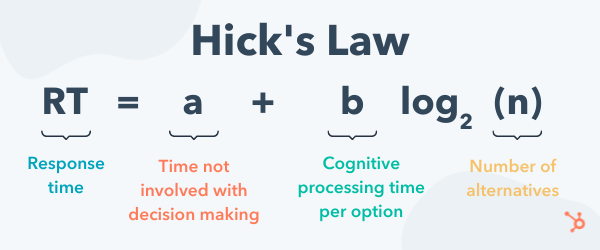Psychology Of Good Design
Meet the Author

PROF. Arvind Lodaya
Professor, School of Liberal Arts and Design StudiesProf. Arvind’s expertise lies at the intersection of Creative Direction and Design Education. He is an alumnus of NID Ahmedabad and has worked extensively in innovation, design and branding. His previous academic experience includes Dean [Research] at Srishti, where he was also the first HP Labs-Srishti Research Chair. He was also a Visiting Scholar at the University of Gothenburg, Sweden, and an academic mentor for various assignments at IIT-G, ISB Hyderabad, Stellenbosch University, South Africa, IIT Mandi and Ambedkar University Delhi.
Earlier in his career as Creative Director at Ogilvy, he led the corporate rebranding for ICICI and strategic design assignments for well-known brands like Seagram, HLL, Arvind, Lakmé, Godfrey Phillips, Cadbury etc.
We live in a world that survives on information. Such information is exchanged in several ways through communication. Depending on the type of information transmitted, the medium of communication differs. One such popular medium of communicating information is through media.
Communication Design is a multi-disciplinary field mixing design, information development and communication to reach the appropriate audience who are interested in being recipients of such information. Communication Design seeks to attract, inspire, create desires and motivate people to respond to messages, to make a favorable impact. The key element here is not only the message but also the way it is communicated for it to be received.
Any industry that wants to promote themselves can’t ignore the importance of Communication Design. From production to sales, from product to brand, from concept to culture, design runs through all aspects of product production and communication. As Don Norman, a design guru stated “Design is not about interacting with a computer; it’s about interacting with the world. To deal with today’s large, complex problems, design education needs to change—to include multiple disciplines, technology, art, the social sciences, politics, and business.”
Psychology has begun to be used internationally in the fields of design and natural sciences. To interact with the world, one needs to understand the world that is made up of human beings and psychology is a field that helps in this understanding. Psychology scientifically studies the human mind and behavior. Psychology can help in Communication Design by making it possible to understand the audience and develop designs that communicate information in a way that would lead to action.
“DESIGN IS NOT ABOUT INTERACTING WITH A COMPUTER; IT’S ABOUT INTERACTING WITH THE WORLD. TO DEAL WITH TODAY’S LARGE, COMPLEX PROBLEMS, TO INCLUDE MULTIPLE DISCIPLINES, TECHNOLOGY, ART, THE SOCIAL SCIENCES, POLITICS, AND BUSINESS".
-DON NORMAN
The popular Netflix documentary called ‘Social Dilemma’ talks about how information is spread through social networking sites and how the ‘endless scroll’ used by Facebook and Instagram revolutionized the amount of time spent on these sites.

Popular social networking sites like Facebook and Instagram
Various theories in psychology are used in communication as well as design. A blend of these theories is used in the Communication Design field.

Gestalt Theory Source: Medium
GESTALT THEORY
There are many aspects of gestalt that can be incorporated into the world of design. Gestalt theories explain people’s perceptions. Certain principles such as similarity, continuity, closure, figure and ground, and proximity are used widely in design studies as well.
VISCERAL REACTIONS
The ascetics of the design need to be pleasing so visceral reactions should be more positive. Such reactions come up from our old brain and understanding psychology in design would help communicate information more positively for it to have desired effects.
MENTAL MODELS
Humans’ cognitive structures possess mental mapping, a way humans can interact with the world. Designers base their designs according to mental models so they can be interacted with easily.
Similarly, there are many more associations that can be made with space, placement, associations, and many more facets to design. Having a background in psychology, a Communication Design expert would have a market advantage as they would fall under the niche set of designers who would be able to communicate to the audience more effectively. Such communication almost always leads to desired action or outcomes. In today’s world, companies who communicate differently are the ones being remembered.
Designers with a background in psychology are highly sought after due to their ability to understand the emotions and behavior of people, and are in a better position to effectively position design and communication to reach a wider audience. They will also be more culturally and socially sensitive to see what drives well within the society. They will have better interpersonal skills which is a key quality a good designer possesses. They would learn to use the above principles and many more psychological principles to create memorable and user-friendly designs to communicate messages.
THE VON RESTORFF EFFECT
The Von Restorff effect is another tool designers use especially for highlighting certain critical details. The Von Restorff effect is, quite simply, the idea that the oddball out is the one that gets remembered. This is also used in webpages where the designer wants to bring attention to specific spots on the site.
SCANNING PROCESS
The human mind scans data in a particular way. Important information is displayed in a way that it would not go missed by the audience. Knowledge of how humans perceive their surroundings is extremely beneficial in Communication Design as important information will not go unnoticed with such understanding.
HICKS LAW
Human cognition is complex and the more decisions available for a person, the longer it takes for him/her to make a decision. The act of making decisions should not be unpleasant- thus limiting the choices given to a customer. While communication takes place, the effort taken by the customer to act on a choice needs to be low. Psychology is an effective tool in design that makes the creative process more productive while the result is going to be more user-centered.

Hicks Law Source: Hubspot
COLORS AND SHAPES
Every color elicits a particular emotion, influences the human mind and behavior in a particular way. It also conveys a message. For example, red denotes passion, aggression, blue denotes calmness, green- nature, yellow- happiness, etc. Understand the target audience and knowing what kind of information would connect well with which color would help in effective communication. Similarly, different shapes are associated with different emotions. For example, circles or ovals are associated with positive emotions of bonding, friendship, and strong relationships. It gives a sense of community and universality.
LOSS AVERSION
The new trend in communication looks at the principle of loss aversion. People’s behavior changes when they realize that they are going to lose out on something vs. on what they are going to gain. Communication of information would be more beneficial when it is represented as a loss to the person than a potential gain. In 1979, Daniel Kahneman and Amos Tversky proved their idea that “losses loom larger than corresponding gains”. What this means for designers and general marketing professionals is that highlighting how a product helps the user avoid a negative experience will be more impactful than showcasing how it helps them gain a new benefit.
Similarly, there are many more associations that can be made with space, placement, associations, and many more facets to design. Having a background in psychology, a Communication Design expert would have a market advantage as they would fall under the niche set of designers who would be able to communicate to the audience more effectively. Such communication almost always leads to desired action or outcomes. In today’s world, companies who communicate differently are the ones being remembered.
Designers with a background in psychology are highly sought after due to their ability to understand the emotions and behavior of people, and are in a better position to effectively position design and communication to reach a wider audience. They will also be more culturally and socially sensitive to see what drives well within the society. They will have better interpersonal skills which is a key quality a good designer possesses. They would learn to use the above principles and many more psychological principles to create memorable and user-friendly designs to communicate messages.







